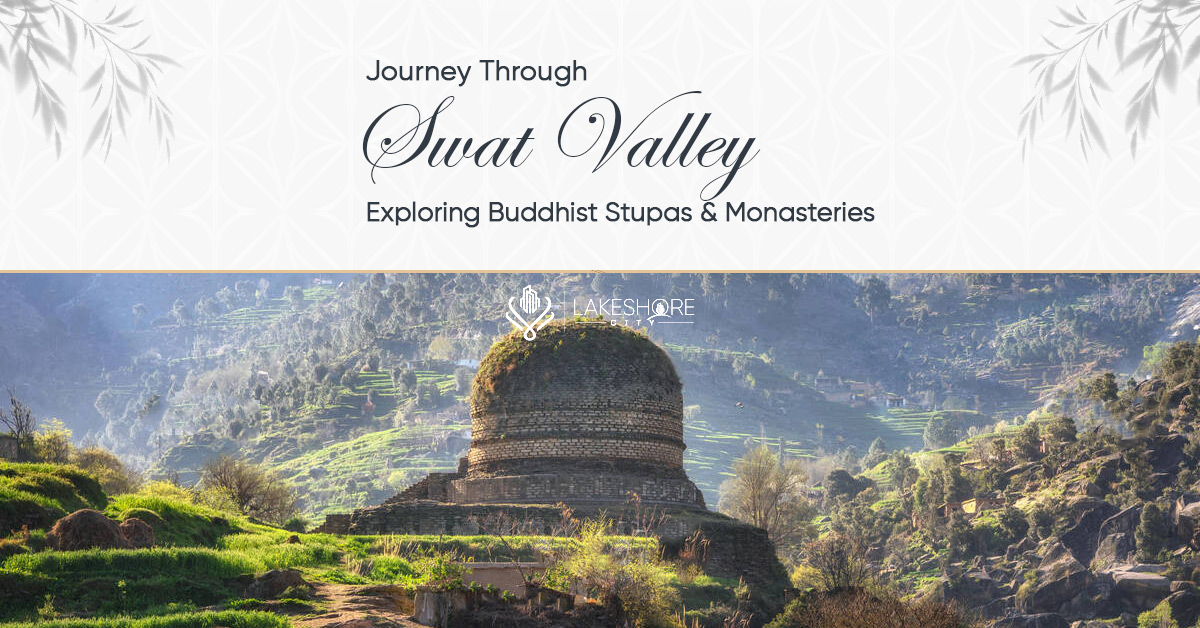Butkara I & II
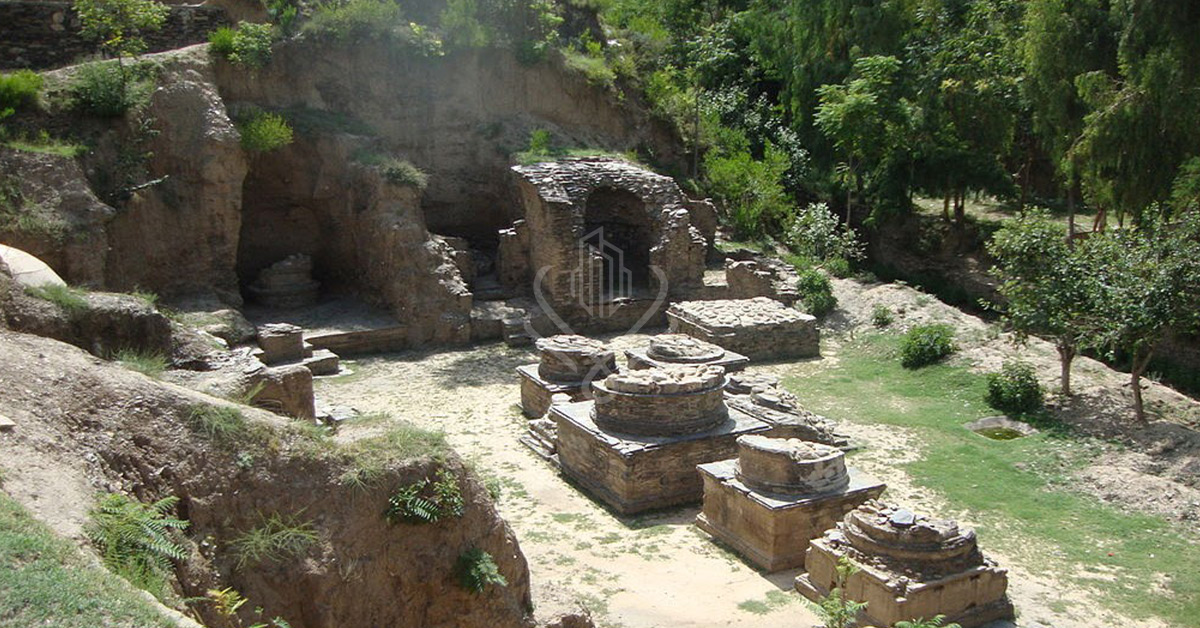

The Butkara Stupa is a significant Buddhist stupa located close to Saidu Sharif, the Swat capital. Ashoka, the Mauryan emperor, may have constructed it, but it is typically placed in the second century, a little bit later. AD. Five times the stupa was enlarged. Over the ensuing centuries, each time by expanding upon and enclosing the earlier framework. An Italian excavated the stupa. endeavor to educate oneself on the different phases of development and expansion. The mission concluded that in the second century BC, the stupa was “monumentalized” by the addition of Hellenistic architectural details.
Shingardar Stupa


On the route to Saidu Sharif, Swat, in the village of Shingardar, which is situated between Ghalegay and Barikot, is the largest stupa in the Indian subcontinent. This stupa, one of the numerous historic monuments in the Swat Valley, is a holdover from the Buddhist era. Large stones and thin slate layers make up the stupa structure, which was constructed by the ancient Swat monarch Uttarasena.
Amluk Dara Stupa


The Amluk-Dara stupa is a remnant of the Gandharan civilization and is situated in the Swat Valley. It is thought that the stupa was constructed in the third century. Hungarian-British archaeologist Sir Aurel Stein made the stupa’s initial discovery in 1926. Domenico Faccena studied it later in the 1960s and 1970s.
The stupa is built on a square plinth that is roughly 4 meters thick. This can be seen for miles around it and is topped by a hemispherical dome that is 21 meters in diameter and 7 meters high.
Gumbat Stupa
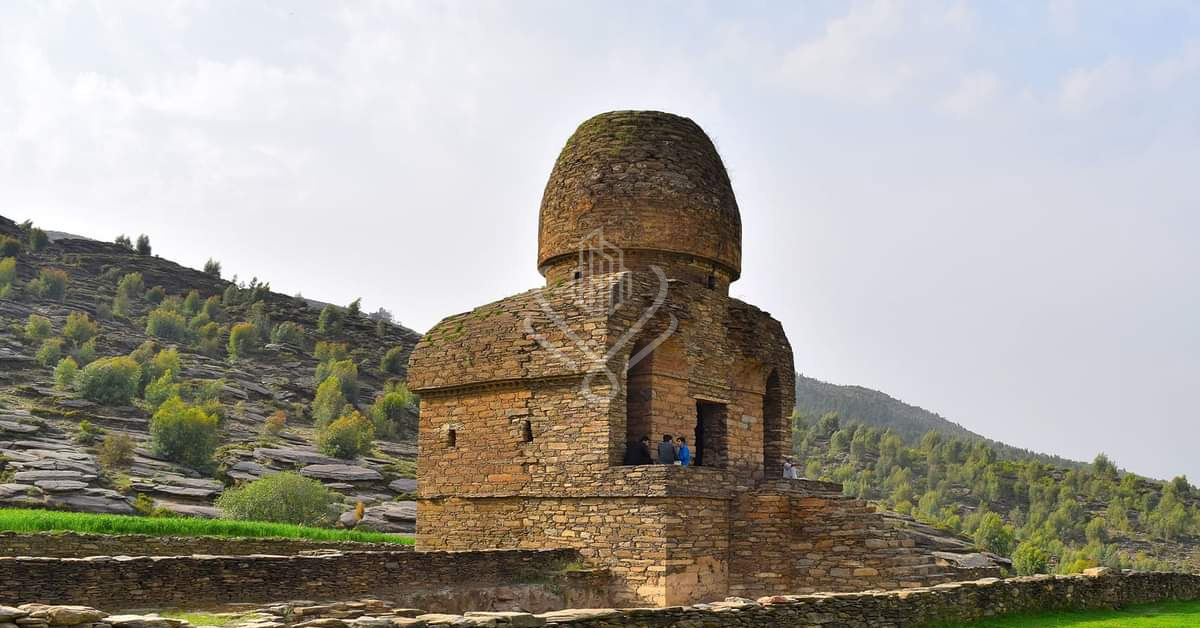

In the Kandag Valley, Gumbat Stupa is located nine kilometers to the south of Birkot, also referred to as Barikot locally. This is among Swat’s best-preserved stupas. It is made up of a windowed, roughly 12-foot-square cell. There is a small corridor all around it that worshippers are supposed to use to move around holy pictures. The large structure known as Kanjar Kot, or Dancer’s Mansion, is located before Gumbat. Although the area is lovely, it is not a good idea to walk there without assistance from locals. The trek to the stupa is thirty minutes from the road. In addition to the stupa’s remnants, there are also some monastery ruins.
Rani Gat Buddhist Ruins
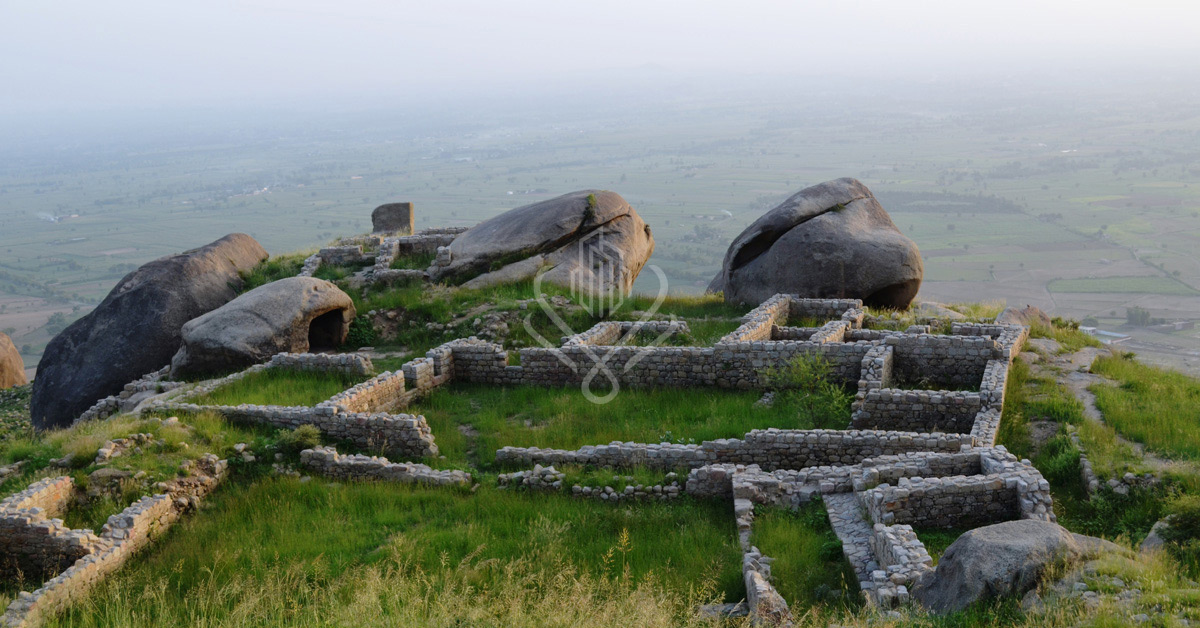

Situated in the Buner district of Khyber Pakhtunkhwa, Pakistan, Rani Gate, also known as the queen of stones in Pashto, is a 2,500-year-old Buddhist archaeological site that is a part of the Gandhara civilization. Rani Gat is a good example of the region’s Buddhist history. Reaching the site requires ascending the Japanese-built stairs that sit atop a hill. The primary draws are the Stupas, which are large rocks that were likely built for religious purposes by the ancient people and placed at a distance.
The town or city had exquisite architecture, and many of the stones came from the nearby mountains. The M1 and N35 provide easy access to Rani Gate. It is roughly 100 km from Peshawar and Islamabad and 20 km from Swabi City.
Sirsukh
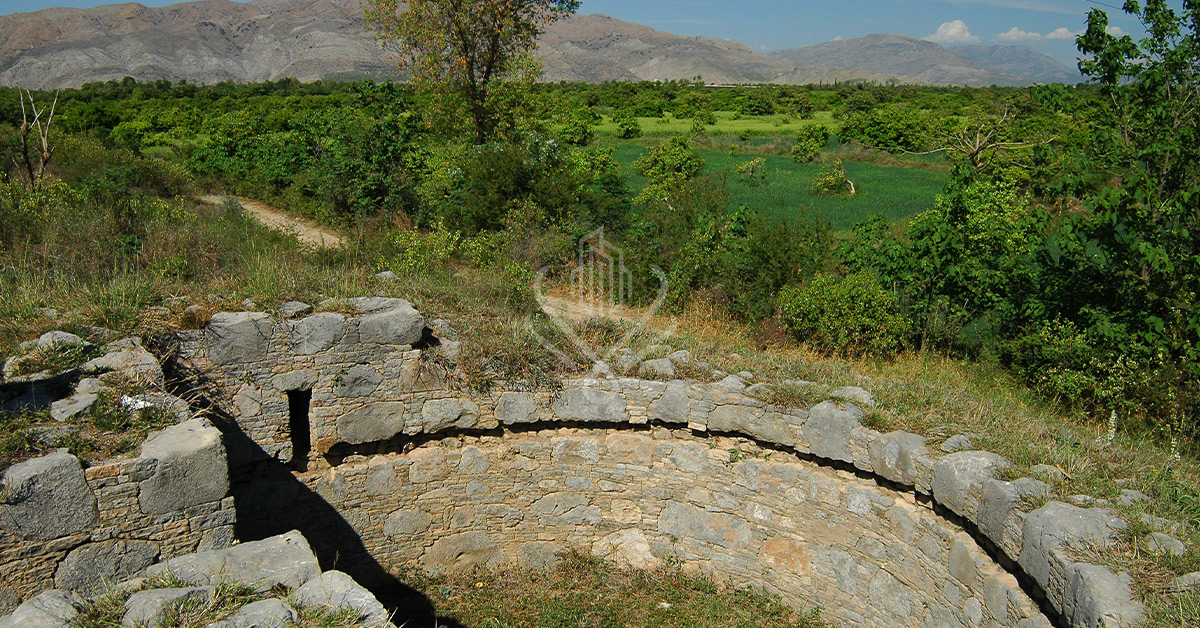

The Kushan city of Sirsukh was most likely founded in the second half of the first century CE, either to relocate people from the destroyed remnants of Sirkap due to an earthquake or to serve as a new capital to commemorate the Kushan conquest. Due to nearby farming, which would need to be severely disrupted in order to facilitate the excavations, the site has not been properly excavated.
Nonetheless, coin hoards from the Kushan emperors as well as the Mughal emperor Akbar have been discovered within the narrow band of fortifications that hugs the walls on one side of the rivulet. This indicates that the city was still inhabited at least a millennium after it was first founded.
Bhamala Stupa
Located approximately 16 km east of Sirsukh, Bhamala is at the easternmost point of the Haro valley and on the northeastern route leading to Mansehra. The river Haro, which at this point sweeps in sharp bends around its base, protects it on three sides, while the hills form its fourth. The establishment of monasteries dates back to the fourth or fifth century. It is composed of the main stupa on the west, surrounded by numerous votive stupas and chapels, and a well-built monastery on the east that follows nearly the same design as the one at Julian.
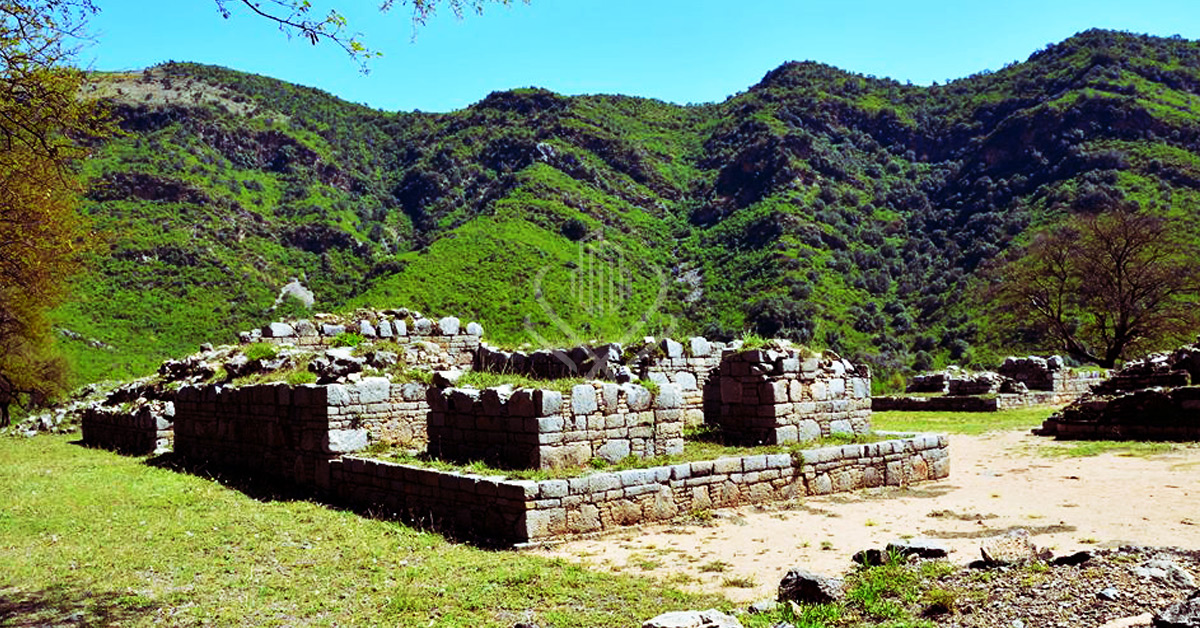

The main stupa is a unique structure with a cruciform plan that consists of four steps on each side that are offset projections from a tall square base supporting the dome above. Semi-ashlar masonry makes up the stupa’s facing, while heavy limestone blocks set in regular courses with tiny pebbles and mud filler form the structure’s core.
Jinna Wali Dheri Site
Situated on the left bank of the Haro River, the site is 10 km northeast of the Taxila Museum, close to the village of Bhera. The monastery has two entrances, 17 cells, and a square floor plan. The main entrance of the monastery faces west, and it leads to both the eastern side’s backside passage and the main stupa. The monastery’s floor was discovered five meters below the mound’s surface, and its 40 x 23 x 8 cm water tank, lined with burned bricks, was located in the center of the monastery.
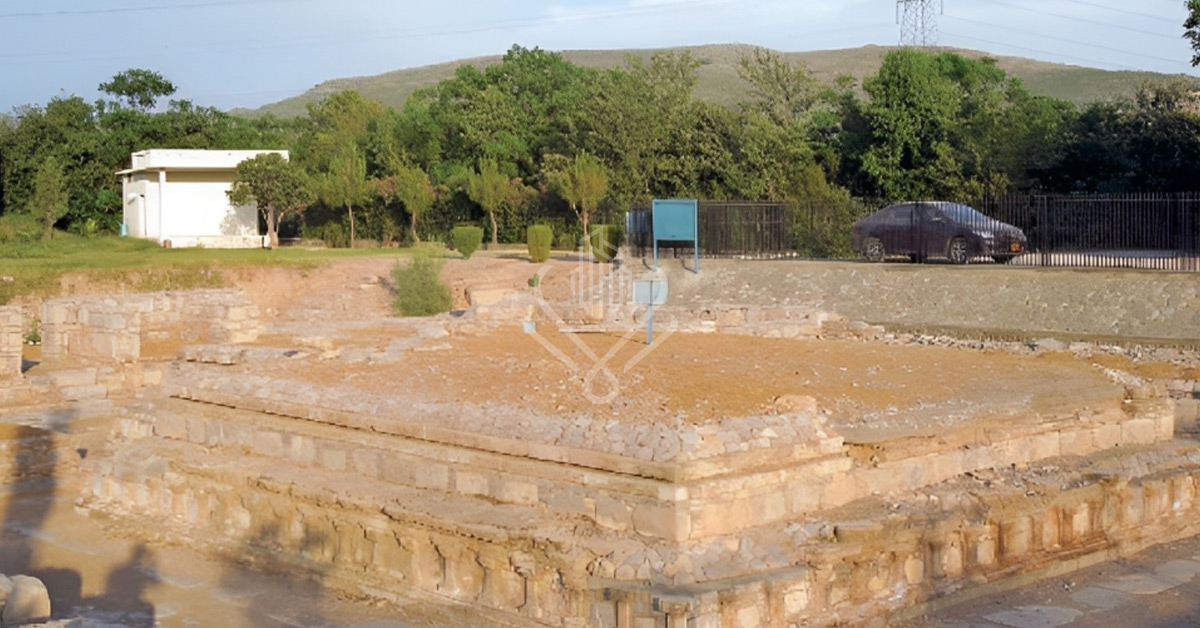

The stupa’s plan is square, measuring 10 by 10 meters, and it has an extended staircase that faces east. The base of the stupa is decorated with Corinthian plasters at regular intervals, and there used to be Buddha and Bodhisattva images in the spaces between the pilasters. The main stupa is flanked by two smaller, square-plan votive stupas. The circumambulatory path, or pradakshinaya, was once plastered with lime; remnants of this plaster are still discernible. The floor of the stupa court is paved with dressed limestone. A row of chapels of various sizes encircles the stupa court.
Numerous small artifacts were found in the stupa area, including glass and shell bracelets, stone and terracotta beads, iron arrowheads, fragments of spear and dagger heads, and nails stucco heads of Buddha and Bodhisattva. Coins from the Kushan dynasty, including those of Kanishka, Vasudeva, and Kidara Kushans, as well as one silver coin of the White Huns, were also found.
The Buddhist mural paintings are Jinna wali Dheri’s most noteworthy discovery. Painting fragments were discovered on the monastery’s main entrance floor. Buddha and Bodhisattvas are portrayed in the paintings in a variety of poses and worshiping poses. The paintings were done on the entrance wall’s thick mud plaster. A thin layer of stucco was painted in shades of blue, black, red, and sepia. No Gandharan Buddhist sanctuary has yet to yield any mural paintings of this kind.
Badalpur Stupa
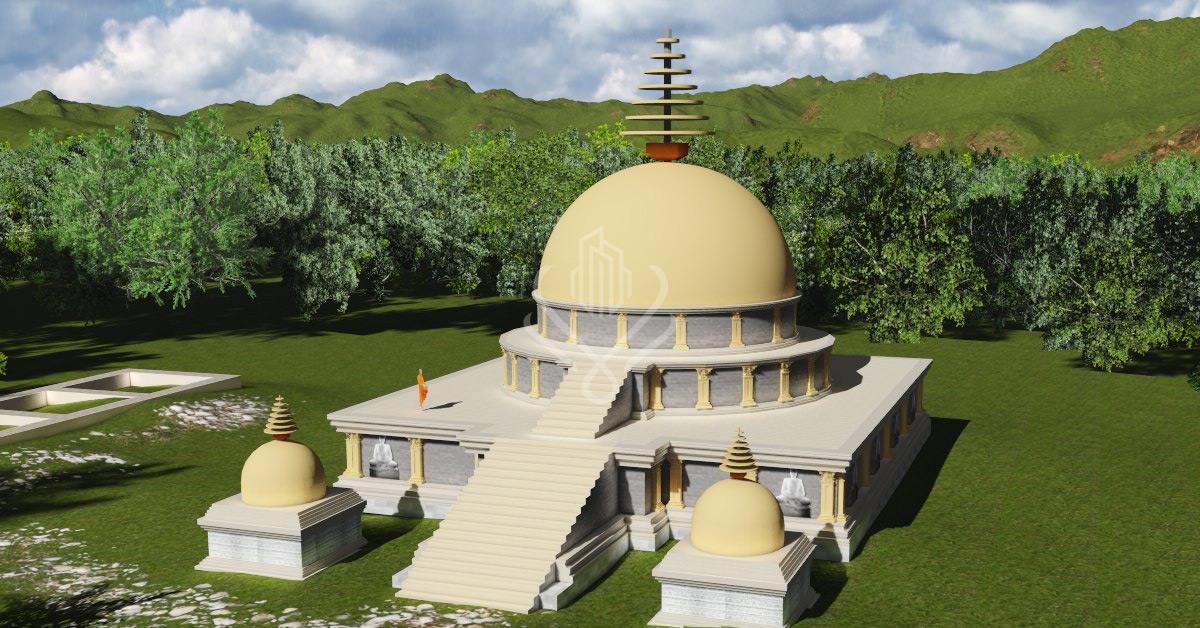

The Badalpur site is close to Jinna Wali Dheri on the Haripur Link Jaulian road. The location consists of a monastery and a stupa. This site
was excavated by Sir John Marshall. The monastery is roughly eight feet high above ground level, and the stupa is situated to the west of the location at a height of 25 feet. Its architectural style suggests that it was constructed sometime between the third and the fifth century A.D.
Mohra Moradu Monastery
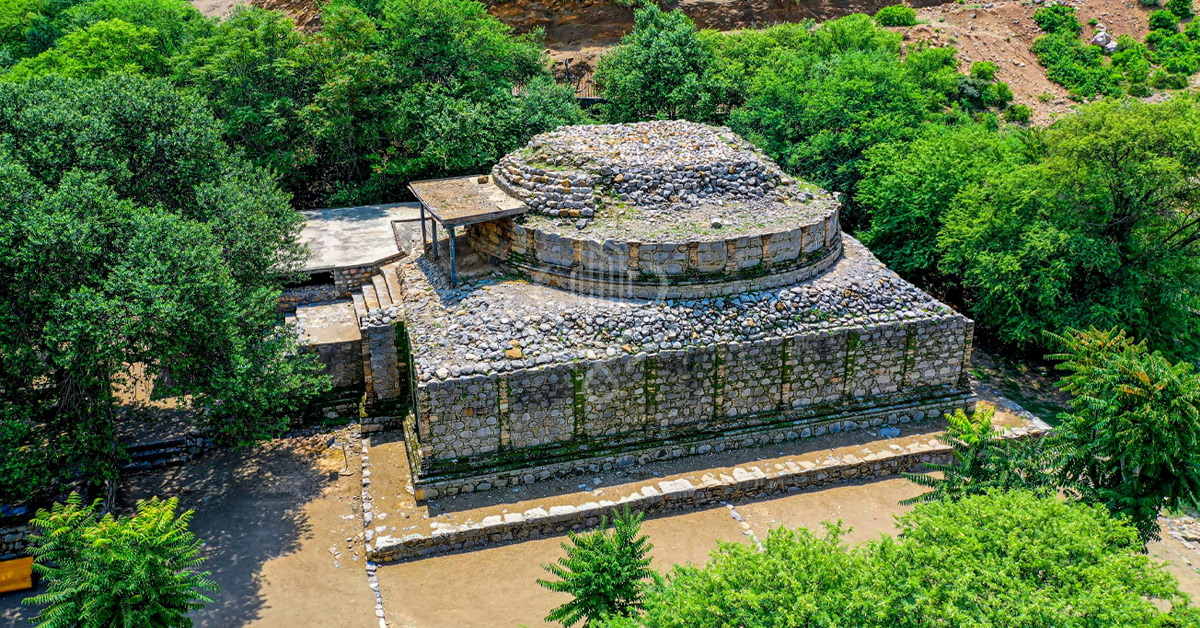

The Mohra Moradu ruins are located behind the Mohra Moradu village, roughly 1.6 kilometers southeast of Sirsukh. When the monastery and stupa were first found, they were both buried under a thick layer of debris from the nearby hills. The only portion of the buildings that could be seen was the 1.5 meters of the crumbling stupa, which had previously been split in half by treasure seekers looking for artifacts.
Pipplan Stupa
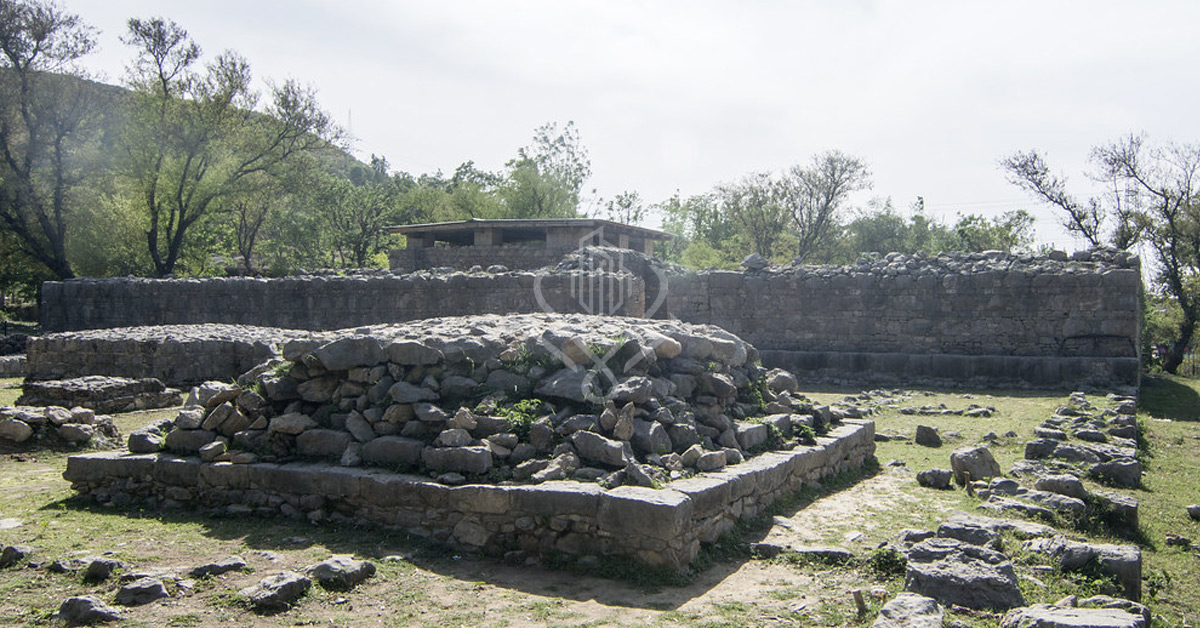

Approximately 365 meters south of the road that leads to the Jaulian monastery, Pippalan Stupa is situated at the base of the hills between Mohra Moradu and Jaulian. The remnants date from two distinct eras. Located towards the east is a monastery courtyard that dates back to the late Parthian or early Kushan era. It features an open quadrangle in the center, surrounded by rows of cells. The ruins of three smaller stupas are located next to the basement of a square stupa facing north in the center of the courtyard. The monastery is made of substantial semi-ashlar masonry and has a kitchen, refectory, and assembly hall on the south, and a court of cells on the north.
Julian Buddhist Stupa & Monastery
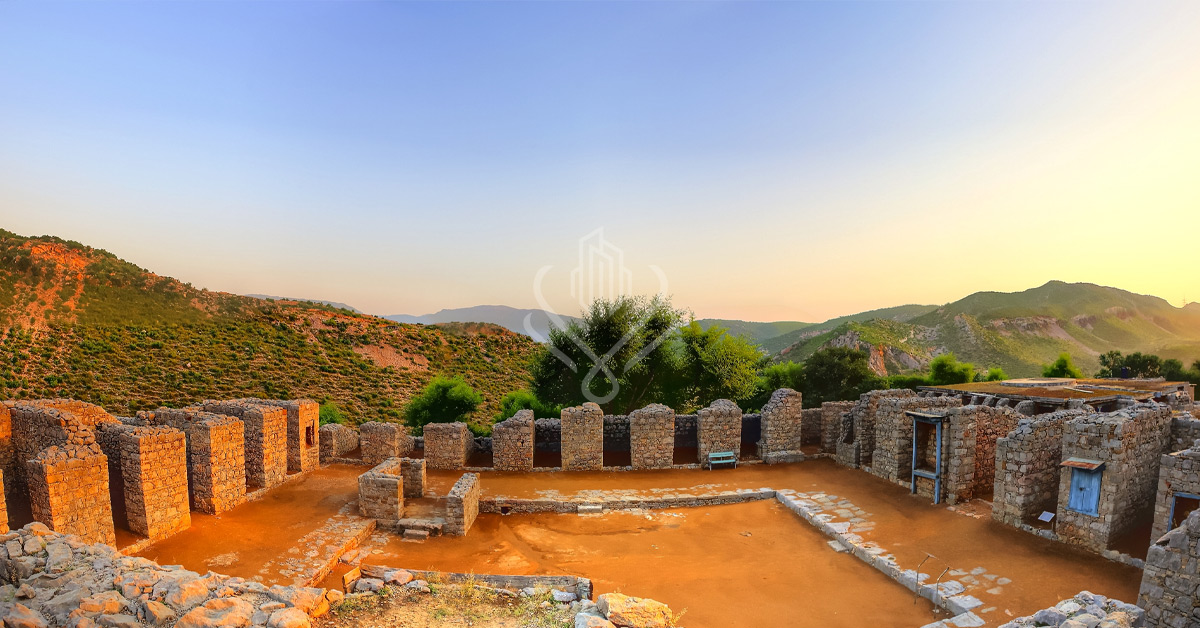

Dating back to the second century AD, this stupa and monastery site features two courts filled with numerous chapels and votive stupas. Perched atop a mountain, this location is regarded as one of the most picturesque in the area. The Mohra Moradu complex, Jinna Wali Dheri, and the recently re-excavated Bhamala stupa—a rare cruciform stupa—are among the other sites.
Conclusion
In conclusion, the Swat Valley in Pakistan is a treasure trove of Buddhist history and ancient artifacts. The region boasts a rich tapestry of stupas, monasteries, and archaeological sites that provide valuable insights into the Gandhara civilization and the spread of Buddhism in the Indian subcontinent. These sites, such as the Butkara Stupa, Shingardar Stupa, Amluk Dara Stupa, Gumbat Stupa, Rani Gat Buddhist Ruins, Sirsukh, Bhamala Stupa, Jinna Wali Dheri Site, Badalpur Stupa, Mohra Moradu Monastery, Pipplan Stupa, and Julian Buddhist Stupa & Monastery, offer a glimpse into the artistic, architectural, and religious achievements of ancient civilizations.
Exploring these sites not only provides a window into the past but also allows us to appreciate the cultural diversity and historical significance of the region. These remnants of a bygone era, with their intricate designs, remarkable construction techniques, and spiritual significance, serve as a testament to the enduring legacy of Buddhism in the Swat Valley. Preserving and studying these sites is not only essential for our understanding of history but also for the cultural heritage of humanity as a whole.
FAQs
Q: Where is the Butkara Stupa located, and who is believed to have constructed it?
Ans: The Butkara Stupa is located near Saidu Sharif in the Swat Valley, Pakistan. While it is attributed to the Mauryan emperor Ashoka, it is typically dated to the second century AD.
Q: What is the unique architectural feature added to the Butkara Stupa in the second century BC?
Ans: In the second century BC, the Butkara Stupa was “monumentalized” with the addition of Hellenistic architectural details.
Q: Where can you find the largest stupa in the Indian subcontinent, and who is credited with its construction?
Ans: The largest stupa in the Indian subcontinent is located in the village of Shingardar, Swat. It was constructed by the ancient Swat monarch Uttarasena.
Q: When is the Amluk-Dara Stupa believed to have been built, and who made its initial discovery?
Ans: The Amluk-Dara Stupa is thought to have been constructed in the third century. Hungarian-British archaeologist Sir Aurel Stein made his initial discovery in 1926.
Q: What distinguishes the Gumbat Stupa in Swat, and what is located near it?
Ans: The Gumbat Stupa is one of Swat’s best-preserved stupas, featuring a windowed cell. It is located near Kanjar Kot, also known as Dancer’s Mansion, along with some monastery ruins.
Q: What is the historical significance of the Rani Gat Buddhist Ruins in Pakistan, and how do you reach the site?
Ans: The Rani Gat Buddhist Ruins are a 2,500-year-old archaeological site that is part of the Gandhara civilization. To reach the site, one can access it easily via the M1 and N35 highways, approximately 100 km from Peshawar and Islamabad and 20 km from Swabi City.
Q: What is the likely origin and purpose of the Kushan city of Sirsukh, and why has it not been fully excavated?
Ans: Sirsukh was likely founded in the second half of the first century CE, possibly to commemorate the Kushan conquest. It has not been fully excavated due to the disruption of nearby farming.
Q: Describe the unique architectural features of the Bhamala Stupa, and where is it located.
Ans: The Bhamala Stupa features a cruciform plan with four steps on each side, semi-ashlar masonry, and a well-built monastery. It is located approximately 16 km east of Sirsukh.
Q: What significant discovery was made at the Jinna Wali Dheri Site, and what do the Buddhist mural paintings depict?
Ans: The Jinna Wali Dheri Site yielded Buddhist mural paintings depicting Buddha and Bodhisattvas in various poses and worshiping postures. It is a remarkable find, as no other Gandharan Buddhist sanctuary has yielded such mural paintings.
Q: What is the historical and architectural significance of the Julian Buddhist Stupa & Monastery, and what are some other notable sites in the area?
Ans: The Julian Buddhist Stupa & Monastery, dating back to the second century AD, consists of numerous chapels and votive stupas. Other notable sites in the region include the Mohra Moradu complex, Jinna Wali Dheri, and Bhamala Stupa, known for its rare cruciform stupa.
Our Featured Article:
Read More: Tracing Path of Enlightenment: Pakistan’s Buddhist Heritage Trail
Don’t miss the chance to invest with Lakeshore! Secure your investment today by investing your financial investment with Lakeshore in the following available options like Lakeshore City, Lakeshore Club, and Lakeshore Farms.
For More updates, please Contact +92 335 7775253 or visit our website https://lakeshorecity.com/
Lakeshore City is the upcoming elite lifestyle at Khanpur Dam. Offering no parallel amenities for the members and owners of distinguished farmhouses.
Become Part of Luxurious Lifestyle
Contact: 0335 7775253


